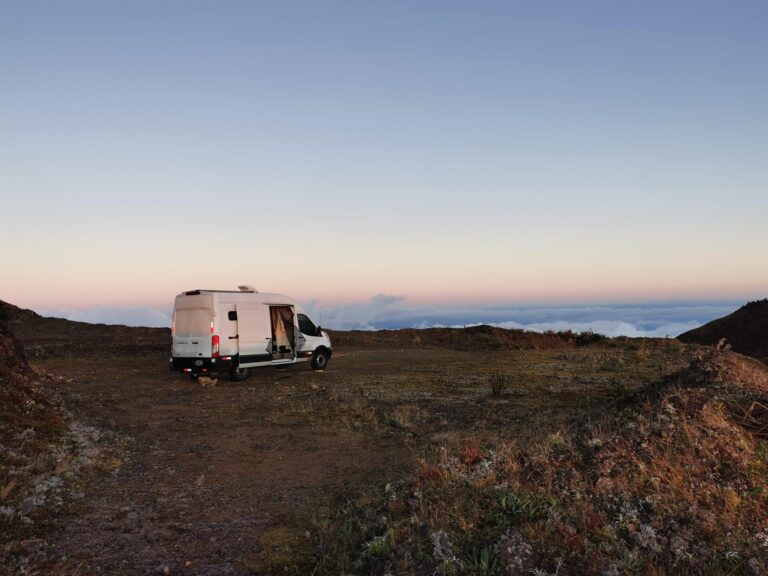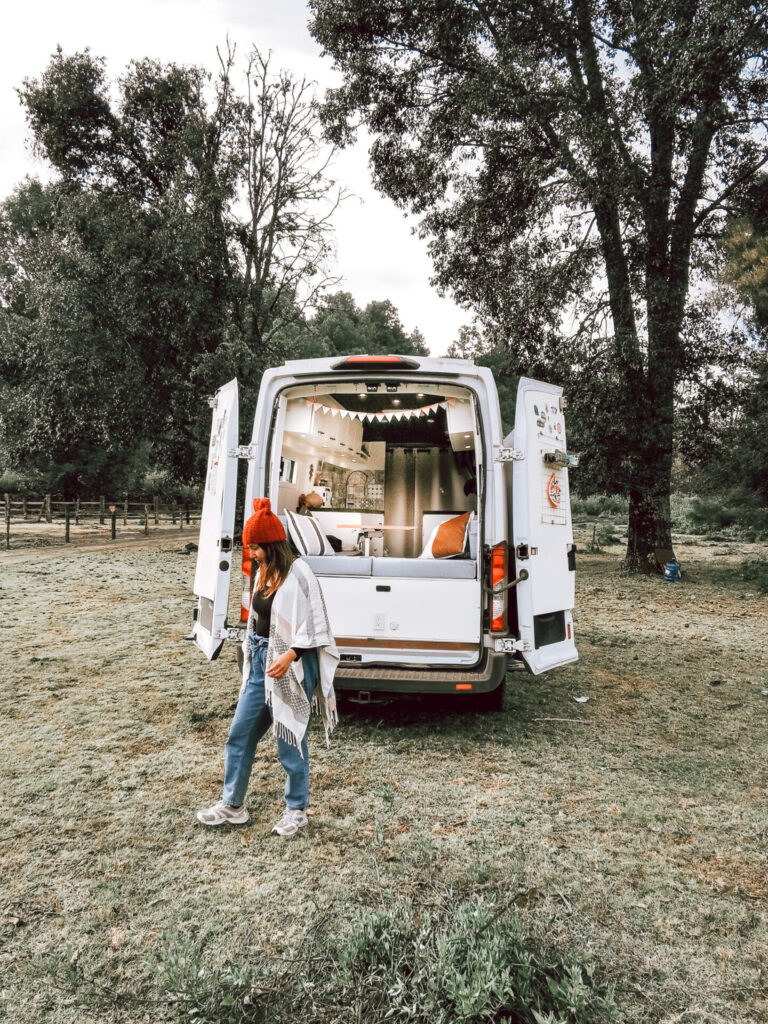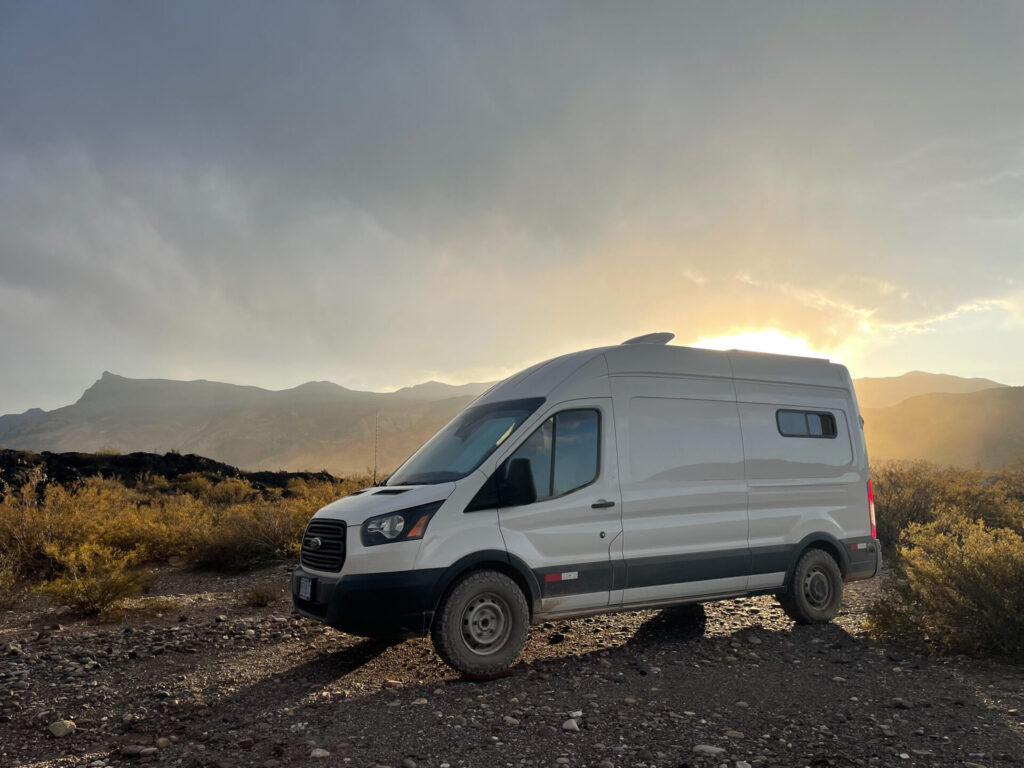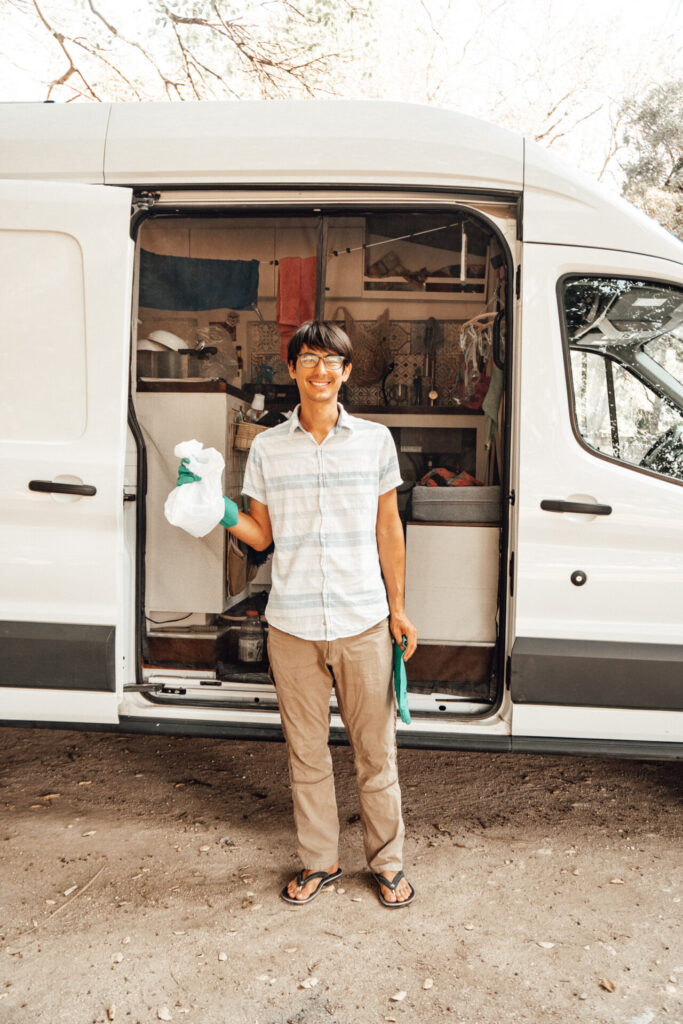
When traveling in an RV, there is a wide range of camping options available to you. One option are paid campgrounds that often provide bathroom, electric, water, and sewage services. On the other end of the camping spectrum is ‘dispersed camping’, which is the term given to camping on public land other than at designated/official campsites. Dispersed camping is often free, without cost, but comes at a significant reduction in services and infrastructure.
In this article, we go over some helpful tips to know when looking for and selecting a dispersed campsite. We’ll discuss how to find safe and legal places to camp as well as what we think about before finalizing our exact parking spot.
Is It Legal? Is It Safe?
First and foremost, the most important thing to consider when selecting a dispersed camping location is to know whether the site is safe and legal to park and spend the night. Sometimes a location is safe, but not necessarily legal. And vice versa.
Below are our top 4 tips for searching for boondocking sites that are both safe and legal.
BLM & National Forest Land
By far and away, we love dispersed camping on BLM (Bureau of Land Management) and National Forest land. With few exceptions, these lands are completely legal to camp on, and you can often find others camping near you, making it safe for RV travelers.
To locate these publicly-owned lands, use the BLM and National Forest interactive maps.
For more specific information on free camping in National Forests, check out this guide from Boondockers Bible.
Best Apps & Websites To Use
Aside from National Forest and BLM land, we are constantly using these apps and websites to quickly locate other free boondocking sites during our travels.
FreeCampSites.net: With thousands of free (and paid) camp spots, this website is a favorite among the RV and campervan community. Be sure to read the latest reviews to ensure that the listed boondocking site is still open and legal to stay!
iOverlander: Oftentimes we don’t have access to the internet, which makes FreeCampSites.net unusable. That’s where the iOverlander app comes in. We use the iOverlander app virtually every day to easily locate free camp spots near us even when cell reception is non-existent.
Bonus: myRewards Plus App: Sometimes you just need a quick place to overnight for free along the highway. If that’s the case, the Flying J myRewards Plus app helps you quickly locate all major truck stops that allow free RV boondocking in their parking lots.

Look Out For Posted Signs
Once you’ve picked out your dispersed camping spot, it’s still a good idea to look around you to see if there are any official posted signs. In some cases a specific site may be closed for camping, which could lead to a hefty fine if you’re discovered by a park ranger. Other times, camping is allowed but it may be prohibited to make campfires. Each place has different rules, so make sure you understand the potential regulations in your area.
Trust Your Gut
At the end of the day, you will need to rely on your gut and experience to know if a boondocking place is safe and legal. If you start to get weird vibes about where you parked, it’s safest to just get out. It’s better to be safe than sorry and there are many other free places to choose from.
Parking Position
If you’ve arrived at a spacious dispersed campground, the next step is to locate the exact spot to park your rig. Surprisingly, there can be quite a lot to consider before you switch off the ignition and unpack your camping equipment!
Make Sure You’re Level
You’d be surprised by just how many rigs we’ve seen parked at a slant. When you’re not flat it affects whatever you’re doing inside your RV; whether it’s cooking, eating, relaxing, or even sleeping. When boondocking out in nature, the ground is rarely level, but with leveling blocks and a bubble level you can get your camper pretty close to flat!
Solar Production
If you rely on solar power to charge your leisure batteries, it’s important to park your RV in a location where your panels can receive sufficient sunlight. Sometimes we see campers who park their rigs under the shade of large trees. And while this helps to keep their RVs cool during the heat of the day, the shade also prevents the panels from charging their batteries. And even just a small amount of partial shade can seriously reduce solar power production.
Generally, we like to pick parking spots that receive lots of direct sunlight in the morning, when the day is still cool. Then, as the sun continues its path west, our camper ends up in the shade in the afternoon when the daily temperature is at its maximum.

Flood Risk
We love parking next to rivers and lakes. But if there’s any chance of rain, be aware of potential flash floods and drastic rises in lake levels. So be sure to park away from low-lying spots and sandy/muddy areas. It may not sound intuitive at first, but flash floods can be particularly problematic in the desert. It’s also a good idea to check your weather app to scan for potential rainstorms.
Park With A View!
Last, but not least, one of the things we pay attention to when selecting our parking position is orienting our campervan so that our sliding door is facing the side with the best view. That way, when we open our door, we’re greeted with that picture-perfect view each morning.
Similarly, if we’re boondocking at a Walmart parking lot, we’ll orient our vehicle so that our sliding door is facing away from the rest of the lot. This gives us a modicum of privacy as cars and people pass by our van.
Plan For ”Leave No Trace”
RV and campervan communities have been booming in recent years. And though we believe this is a great thing, we also understand that this puts a strain on dispersed campsites. If you’re well-versed in free camping, you may have already noticed all the trash, toilet paper, and miscellaneous junk that gets left behind when campers leave. That’s why before you head out to find your next boondocking site, we recommend having a “Leave No Trace” plan.

What is “Leave No Trace?”
Leave No Trace (LNT) is a set of ethics promoting the conservation of the outdoors and minimal impact on the surrounding environment.
Garbage Waste: Make sure everything you bring into the campsite is brought out. This includes packaging and food waste. When dealing with raw food waste, like potato skin peels and coffee grinds, we like to dry them out first in the sun in a bowl before dumping them in our trash can. This prevents our trash can from becoming a mold breeding ground and smelling.
Water Waste: We never dump our gray water when boondocking out in nature. We keep a simple 20-liter jerry can under our sink. If we are careful with our water usage, a 20-liter gray water tank will usually last us 4-5 days. Once we leave, we’ll dump our gray water tank in the bathroom at the next gas station or rest area.
Human Waste: If you have a toilet in your RV, great! Use it and be sure to carry the black water out with you and dump it at an appropriate place. Otherwise, try to use a bathroom if there’s one nearby, even if it’s a smelly pit toilet. If there are no toilets nearby, we carry a camping trowel and dig catholes.
Conclusion
We hope this article helped give you some confidence for your next dispersed camping adventure! There’s something very raw, exciting, and vulnerable when parked out in the wilderness instead of in the confines and safety of an official campground. And we think it’s addictive!
If you have any questions about dispersed camping, or boondocking in general, please don’t hesitate to contact us in the email address we provide below.
Happy traveling!
How To Contact Us
For more campervan living & building tips, check out our blog: www.asobolife.com.
Or for more on our current Pan-American road trip to Argentina visit us on Instagram: @asobo-life
Want to learn more from Yuko & Eric? Check these articles!

